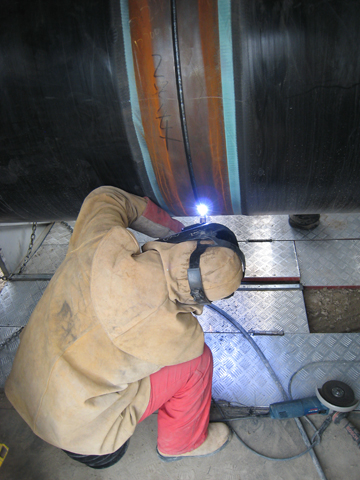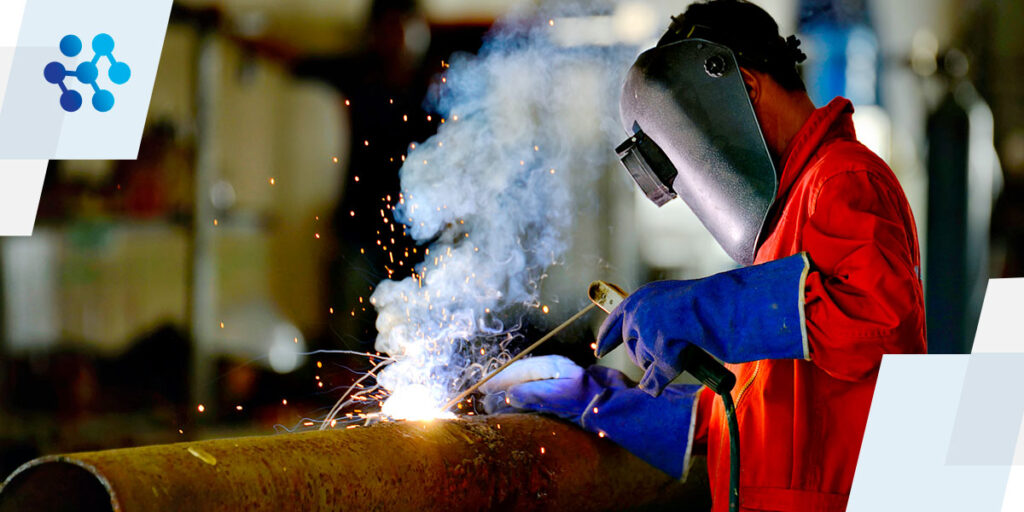Usual Welding Repair Work Issues and How to Address Them Efficiently
Welding fixings commonly encounter an array of concerns that can endanger the integrity of the last product. Usual problems consist of inadequate penetration, porosity, and misalignment, to name a few. Each problem offers unique difficulties that require particular strategies for resolution. Comprehending these problems is vital for welders intending to improve their results and abilities. This discussion will certainly discover these usual welding repair work problems and efficient techniques to address them.
Poor Penetration
Insufficient penetration occurs when the weld steel fails to completely fuse with the base material, causing weak joints and possible structural failures. This problem commonly originates from not enough heat input, incorrect electrode angle, or improper welding rate. Welders may run into inadequate penetration due to a mistake of the essential parameters for a specific material thickness or type. In addition, contamination on the base product's surface area can prevent effective bonding, worsening the issue. To address insufficient infiltration, welders need to guarantee suitable settings on their equipment and preserve a clean work surface. Regular inspection of welds is recommended to recognize any type of shortages early, enabling timely improvements and the prevention of compromised structural honesty in bonded assemblies.
Porosity
Porosity is an usual problem in welded joints that manifests as little gas bubbles entraped within the weld steel. This problem can endanger the honesty of the weld, bring about minimized strength and prospective failing under stress and anxiety. Montana Mobile Welding and Repair Belgrade. Porosity usually develops from contamination, wetness, or incorrect welding methods, which enable gases to leave into the liquified weld swimming pool. To address porosity, welders need to ensure correct surface prep work, keep a tidy workplace, and use suitable welding parameters. Additionally, picking the ideal filler product and shielding gas can alleviate gas entrapment. Regular examination and testing of welds can help determine porosity early, ensuring prompt rehabilitative actions are taken, consequently preserving the top quality and reliability of the bonded structure
Misalignment
Misalignment in welding can arise from numerous variables, including improper configuration and thermal growth. Recognizing the source is necessary for reliable resolution. Several modification methods are offered to straighten parts and assure structural integrity.
Causes of Imbalance
Welding imbalance frequently originates from a selection of underlying problems that can jeopardize structural integrity. One key reason is inappropriate fit-up of components prior to welding, which can lead to spaces and uneven surface areas. Variations in thermal expansion throughout the welding procedure can also cause distortion, especially if the materials being signed up with have different coefficients of development. In addition, poor securing and fixturing may fall short to hold elements firmly in area, leading to motion throughout welding. Poorly maintained devices, consisting of welding devices and devices, might present inconsistencies in the weld grain, further contributing to misalignment. Ultimately, operator error, coming from not enough training or experience, can also play a considerable role in developing misaligned welds.
Adjustment Strategies Offered
Addressing misalignment efficiently calls for a mix of restorative strategies customized to the details concerns available. One typical approach is the usage of components or jigs to hold components in the proper placement throughout welding, making sure regular placement. In addition, pre-heating the products can help in reducing distortion and improve fit-up. For considerable imbalance, mechanical realignment techniques, such as using hydraulic jacks or clamps, can be employed to correct the placement before welding. Post-weld warmth therapy might additionally be needed to relieve tensions triggered by imbalance. Ultimately, mindful assessment and change throughout the setup stage can prevent misalignment concerns from becoming considerable troubles, promoting a smoother welding process and enhancing general architectural integrity.
Distortion
Distortion is a common difficulty in welding that can develop from various aspects, including uneven heating and air conditioning. Understanding the reasons of distortion is necessary for executing reliable prevention techniques. Resolving this issue not just enhances structural integrity but additionally boosts the general high quality of the weld.
Root causes of Distortion
When subjected to the intense warmth of welding, products often undertake adjustments that can lead to distortion. This sensation largely arises from thermal expansion and tightening during the welding procedure. As the weld location heats up, the material broadens; upon air conditioning, it acquires, which can create internal tensions. In enhancement, uneven heating across a workpiece can intensify these stress and anxieties, causing warping or flexing. The sort of product also plays a considerable function; metals with differing thermal conductivity and coefficients of expansion may react differently, causing unforeseeable distortions. Poor joint design and insufficient fixturing can add to misalignment throughout welding, increasing the possibility of distortion. Comprehending these reasons is essential for effective welding repair work and avoidance methods.
Prevention Techniques
Efficient avoidance strategies for distortion during welding concentrate on controlling warmth input and making certain appropriate joint design. Keeping a consistent heat input aids to lessen thermal expansion and contraction, which can result in distortion. Using strategies such as pre-heating the work surface can also reduce the temperature level slope, promoting consistent heating. Furthermore, selecting appropriate joint layouts, such as T-joints or lap joints, can improve stability and minimize tension concentrations. Carrying out appropriate fixturing to safeguard the work surfaces in position even more aids in keeping placement throughout the welding procedure. Finally, staggered welding series can disperse warm more equally, avoiding local distortion. By using these methods, welders can significantly lower the probability of distortion and boost the total quality of their welds.
Fracturing
Breaking is a common concern encountered in welding repair services, usually arising from numerous elements such as improper cooling rates, material selection, or poor joint prep work. The event of cracks can significantly endanger the stability of the weld, bring about possible failings during operation. To resolve this problem, welders need to first evaluate the root creates, ensuring that materials work and suitably picked for the particular application. Furthermore, managing the cooling rate throughout the welding process is important; fast cooling can cause stress and bring about cracking. Appropriate joint design g welding and preparation additionally add to reducing the danger. Applying these strategies can improve weld high quality and sturdiness, eventually minimizing the likelihood of fracturing in ended up weldments.

Incomplete Fusion
A considerable problem in welding repair work is insufficient combination, which occurs when the weld steel does not properly bond with the base material or previous weld passes - Belgrade. This issue can cause weak points in the joint, potentially endangering the stability of the welded structure. Factors adding to incomplete fusion include inadequate heat input, incorrect welding technique, and contamination of the surface areas being joined. click here to find out more To address this issue properly, welders need to guarantee appropriate pre-weld cleansing and surface preparation, as well as adjust their welding parameters to achieve appropriate infiltration and blend. Normal inspection throughout the welding procedure can additionally aid identify insufficient combination early, allowing for timely rehabilitative measures to enhance the total quality of the weld
Overheating
While welding repair services can boost structural integrity, overheating offers a considerable obstacle that can result in material degradation. Too much heat during welding can alter the mechanical homes of metals, causing minimized stamina, increased brittleness, and bending. This sensation is especially important in high-stress applications where architectural integrity is extremely important. Recognizing getting too hot can entail aesthetic examinations for staining or distortion, in addition to monitoring temperature throughout the welding procedure. To reduce the dangers connected with getting too hot, welders must employ suitable methods, such as controlling heat input, adjusting traveling rate, and making use of ideal filler products. Additionally, applying pre- and post-weld heat therapies can aid bring back product buildings and enhance the overall top quality of the repair work, making certain long-lasting efficiency and safety.
Often Asked Questions
What Are the Typical Signs of a Welding Defect?

Exactly How Can I Evaluate My Welds for Quality?
To examine welds for quality, one can make use of aesthetic assessments, ultrasonic testing, and radiographic methods. Each strategy assures structural honesty, recognizes issues, and confirms adherence to defined requirements, ultimately enhancing the reliability of the welded joints.
What Safety Safety Measures Should I Take While Welding?
When welding, one ought to prioritize security by using appropriate individual protective devices, guaranteeing correct air flow, securing flammable products away, keeping a tidy workspace, and being mindful of surroundings to stop accidents and injuries.
Can I Repair a Weld Without Remodeling the Entire Joint?
Fixing a weld without renovating the entire joint is possible, relying on the damages (Belgrade Fabrication). Techniques such as grinding, including filler material, or making use of a welding process can properly address specific imperfections while preserving the surrounding structure
What Devices Are Crucial for Efficient Welding Repair Works?
Necessary tools for reliable welding repair work include a welding machine, cable brush, grinder, read here safety gear, clamps, and filler products. Each tool plays a crucial role in guaranteeing quality and safety during the fixing process. Porosity usually occurs from contamination, moisture, or inappropriate welding strategies, which enable gases to leave into the molten weld swimming pool. Badly maintained devices, including welding devices and tools, may introduce disparities in the weld bead, more contributing to misalignment. When subjected to the extreme warmth of welding, materials frequently undergo changes that can lead to distortion. Breaking is a common issue come across in welding repairs, frequently resulting from various elements such as improper air conditioning rates, material option, or poor joint preparation. A significant concern in welding repair services is incomplete blend, which occurs when the weld metal does not effectively bond with the base product or previous weld passes.